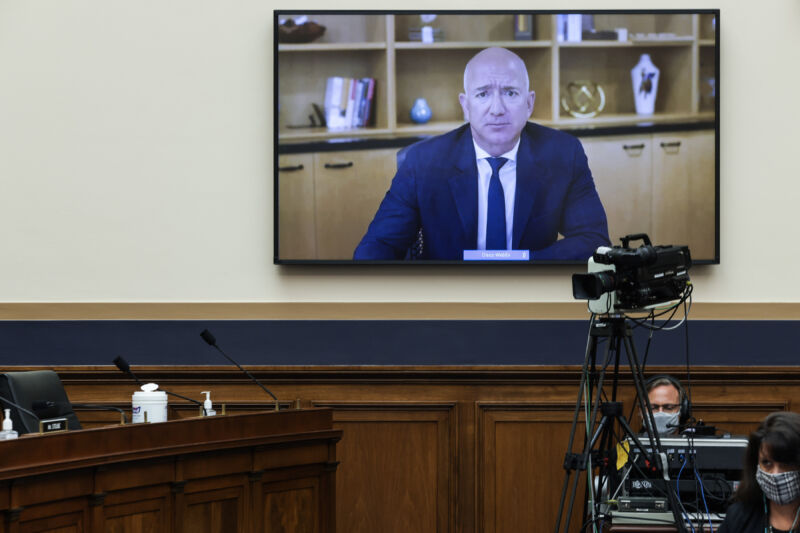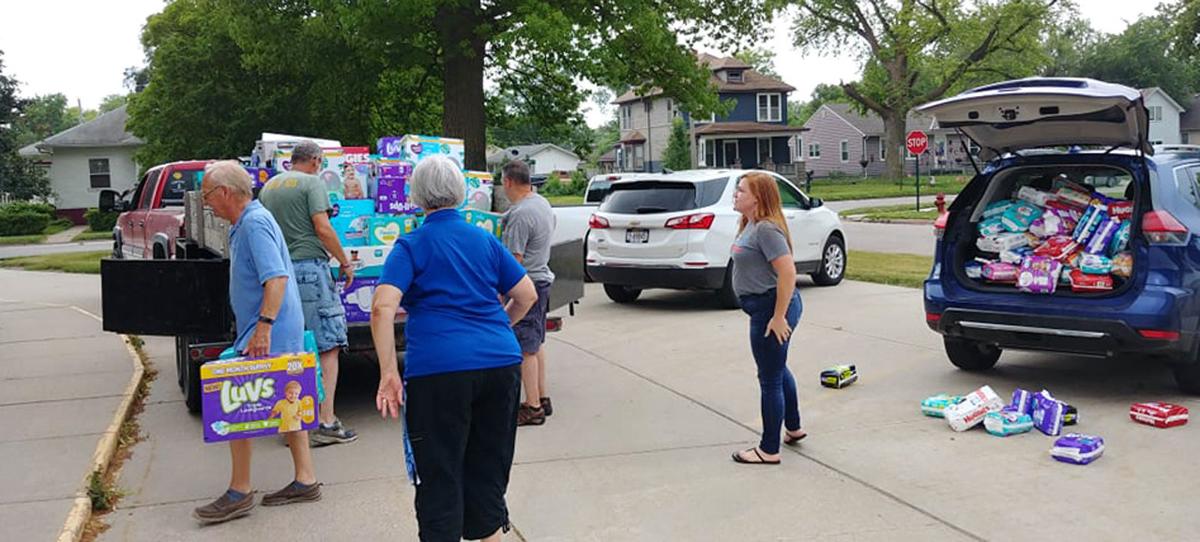
Emails published by the House Judiciary Committee this week confirm an accusation that critics have long leveled against Amazon: that the company's aggressive price-cutting for diapers in 2009 and 2010 was designed to undercut an emerging rival.
That rival, Quidsi, had gained traction with a site called Diapers.com that sold baby supplies. Amazon had good reason to worry. As journalist Brad Stone wrote in his 2013 book about Amazon, Bezos' company didn't start selling diapers until a year after Diapers.com did. At the time, diapers were seen as too bulky and low-margin to be delivered profitably.
But Quidsi's founders figured out how to do it. They optimized their packaging for baby products and positioned warehouses close to metropolitan areas. That not only allowed them to get cheaper ground-shipping rates—it also allowed them to provide overnight shipping to most of their customers—in many cases, faster than Amazon's own shipping.
Quidsi's plan was to gradually expand into other retail categories, much as Amazon had done a decade earlier. If Quidsi's growth had continued unchecked, the company could have become a major Amazon rival. But Amazon made sure that didn't happen—first by launching a brutal price war, then by buying the company. The new emails provide an inside view into Amazon's thinking during this fight.
At Wednesday's hearing before the House Judiciary Committee, Rep. Mary Gay Scanlon (D-Pa.) confronted Bezos about Amazon's aggressive diaper price-cutting. Bezos responded he didn't remember the specifics.
"What I can tell you is that the idea of using diapers and products like that to attract new customers who have new families is a very traditional idea," Bezos said.
When Scanlon asked how families benefitted from Amazon raising prices after driving out a major competitor, Bezos responded, "I don't agree with that premise." He noted that there were many other places to buy diapers, including numerous brick-and-mortar retailers.
“They are our biggest competitor in the diaper space”
By early 2009, Quidsi's growth had attracted the attention of Amazon executives. "They are our biggest competitor in the diaper space," wrote Amazon executive Doug Herrington in an email obtained by the House Judiciary Committee. "They keep the pressure on pricing on us. They apparently have lower fulfillment costs than we have."
In a followup a few minutes later, he wrote that "we need to match pricing on these guys no matter the cost."
According to Stone, an Amazon executive met with Quidsi's founders in 2009 and encouraged them to consider selling the company. The founders declined. Soon afterward, Amazon slashed its diaper prices by as much as 30 percent.
But Quidsi kept growing. By 2010, the company had earned the loyalty of thousands of young parents and had reached $300 million in revenue.
In June 2010, Quidsi announced it was expanding to a second product category with a new site, soap.com. That got the attention of Jeff Bezos, who asked several subordinates for their thoughts in a June 8 email.
"Given diapers.com's strength and competencies, soap.com is our most significant short-term competitor in the hpc space," Herrington replied to Bezos and other Amazon execs (HPC is apparently a reference to "health and personal care"—one of Amazon's product categories).
"We have already initiated a more aggressive 'plan to win' against diapers.com in the diaper/baby space," Herrington continued. In addition to offering "market leading pricing on diapers," Herrington wrote, Amazon was preparing to launch a new "Amazon Mom" program that offered parents deeper discounts on diapers and related products if customers signed up for a subscription.
Amazon ratchets up the pressure
Quidsi's founders didn't want to sell their company, but Amazon's diaper price war was starting to hurt Quidsi. Growth was slowing, and Quidsi was having trouble raising additional capital to continue expanding.
On September 14, the founders of Quidsi flew to Seattle to meet with Amazon and discuss a possible acquisition. As Quidsi's founders were sitting in a meeting with Amazon brass, Amazon hit Quidsi in the gut. It announced a new program called "Amazon Mom" that offered free Prime service and an additional 30-percent discount on diapers if users signed up to get them through Amazon's monthly "subscribe and save" program. This was a larger discount than Amazon offered on most other Subscribe and Save items.
This put Quidsi in an untenable situation, as Stone writes:
That month, Diapers.com listed a case of Pampers at $45; Amazon priced it at $39, and Amazon Mom customers with Subscribe and Save could get a case for less than $30. At one point, Quidsi executives took what they knew about shipping rates, factored in Proctor and Gamble's wholesale prices, and calculated that Amazon was on track to lose $100 million over three months in the diapers category alone.
Amazon's losses may have actually been even larger. During Wednesday's hearing, Scanlon said that internal documents obtained by the committee showed Amazon losing $200 million in a single month from diaper products.
Amazon knew it was bleeding Quidsi dry. An internal email later in September discussed the price cuts Quidsi was forced to make to compete with the new Amazon Mom discounts. "They expect to lose lots of money in the next few yrs," wrote executive Peter Krawiec. "This will make it worse."
Quidsi didn't have the money to fight a lengthy price war with Amazon, and venture capitalists were reluctant to give Quidsi more cash to fight what looked like a hopeless battle. So in November, Quidsi reluctantly signed a merger agreement with Amazon.
“I don’t remember that”
When Stone was writing his book, an Amazon executive told him that (in Stone's words) "everything Amazon subsequently did in the diapers market [after mid-2010] was planned beforehand and unrelated to competing with Quidsi." But the newly released emails contradict that claim. Herrington specifically listed the Amazon Mom rollout as part of Amazon's "aggressive 'plan to win' against diapers.com." Later in the same email, Herrington wrote that "to the extent this plan undercuts the core diapers business for diapers.com, it will slow the adoption of soap.com."
Amazon's claim is also hard to square with the company's actions post-acquisition. Stone notes that "a month after it announced the acquisition of Quidsi, Amazon closed the [Amazon Mom] program to new members." Then a few weeks later, as the Federal Trade Commission was giving the deal unexpectedly close scrutiny, Amazon re-opened Amazon Mom—but with smaller discounts. In effect, Amazon hiked diaper prices soon after the acquisition.
When Scanlon asked whether Bezos had signed off on raising diaper prices after the acquisition, Bezos pled ignorance.
"I don't remember that at all," he said. "We match competitive prices. I believe we followed diapers.com."
The FTC ultimately approved the deal. Amazon initially let Diapers.com continue as a separate service but shut it down in 2017.
The Link LonkJuly 31, 2020 at 01:42AM
https://ift.tt/2CVG6E5
Emails detail Amazon’s plan to crush a startup rival with price cuts - Ars Technica
https://ift.tt/2Comt7j
Diapers

No comments:
Post a Comment